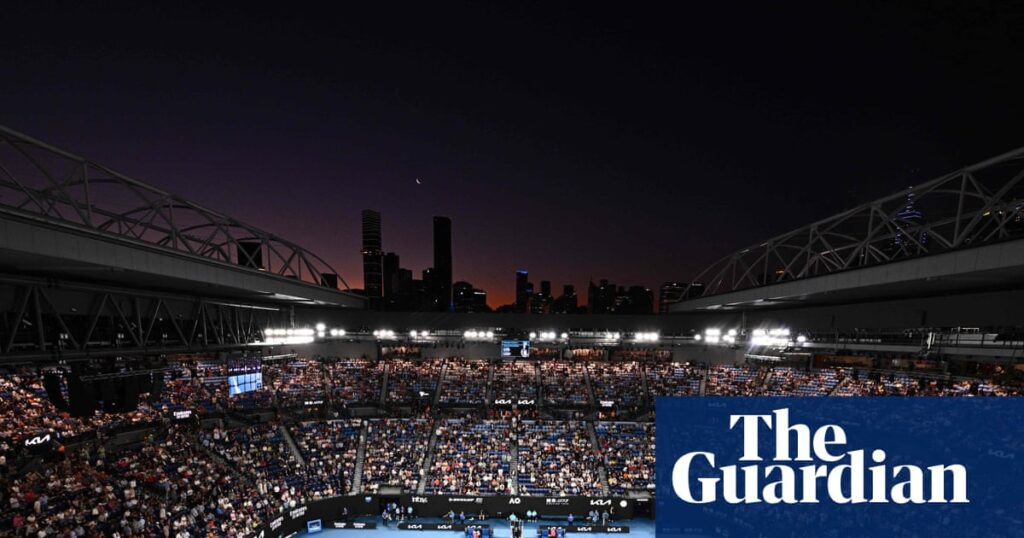Some fans hate being stepped over inside the stadium and just want to enjoy the action in peace. Others won’t sit anywhere else except the end of a row, and are prepared to pay a premium for the privilege.
The extra cost of an aisle seat has reached $25 at the Melbourne Formula One Grand Prix, as part of a trend adopted at sporting events such as the MotoGP at Phillip Island and the Australian Open tennis, as well as at some music concerts, to price tickets on the edge of bays higher than those in the middle.
A spokesperson for Tennis Australia confirmed aisle seat pricing was first introduced at the Melbourne Park major in 2022, with a “modest premium” of $5, “responding to fan preferences for extra legroom and easier access”.
The Australian Open is placing a premium of between $5 and $15 on aisle seats for the 2026 tournament, although not all bays in all sessions carry the extra charge.
Academic research, including a study published last year in the Sport Business and Management journal, has found aisle seats at sporting events are more valuable than others on the secondary market.
Dr Alex Belli, a senior lecturer in marketing at the University of Melbourne, said people are prepared to pay more for easier access to toilets and food vendors, and to be able to get in and out without disturbing other patrons.
“Consumers do not mind paying extra for convenience, a phenomenon commonly referred to as ‘convenience premium’,” he said.
In one of the sideline bays on the lower bowl of Rod Laver Arena for the first 2026 Open evening session, an ordinary seat costs $319, while the two seats on either side of the stairs cost $334. A similar aisle seat on the same night at Margaret Court Arena costs $139 in a bay where seats otherwise cost $129.
“Data showed aisle seats consistently sold first, confirming strong demand,” Tennis Australia’s spokesperson said. “Today, aisle seats remain equally popular as non-aisle options, with a small premium applied based on demand.”
The premium at the Melbourne Grand Prix has increased to $25 per aisle seat for the 2026 race, up from $20 this year and $15 in 2023. A ticket at the Webber Stand on the Friday costs $135, but in one of the four seats at either end of a row, the cost is $160. At the MotoGP in Phillip Island this weekend, aisle seats cost $15 extra.
after newsletter promotion
Prof Nitika Garg, a consumer behaviour researcher from UNSW, said it’s likely aisle premiums will continue to rise if the seats continue to sell, but sports and promoters risk a backlash. “[Increases to aisle seat prices] would be a function of demand, whether that’s the right thing to do is unclear,” she said.
Dynamic pricing is being adopted broadly in a range of industries, although some forms have drawn criticism including from the government.
Garg said the idea of dynamic pricing was to “take out as much of the marginal profit as you can from each customer based on their willingness to pay, but that’s not usually the best approach because people want to feel like they weren’t really exploited. People want to feel like, ‘yes, you’re a business and you want to make a profit’, but they don’t want to be wrung out of every cent.”
Sports could consider “bundling” costs – or avoiding splitting separate charges – to prevent consumer resentment, Garg said, or look to the example of airlines and use loyalty programs to offer the choice of aisle seats as a reward.
The practice of applying aisle premiums has also been evident at music concerts, and was first widely reported by Billboard magazine in 2019.
Not all sports are wedded to the aisle premium. Those who have watched a day of Test cricket are familiar with the increasing tempo of patrons’ bathroom breaks into the afternoon session and the challenge for some to navigate out of a row.
But ticketing officials in Cricket Australia have not received enough feedback to warrant pursuing aisle pricing. And the practice has yet to take hold at other summer sporting stalwarts in the NBL and the A-Leagues.


